Stand up for the facts!
Our only agenda is to publish the truth so you can be an informed participant in democracy.
We need your help.
I would like to contribute
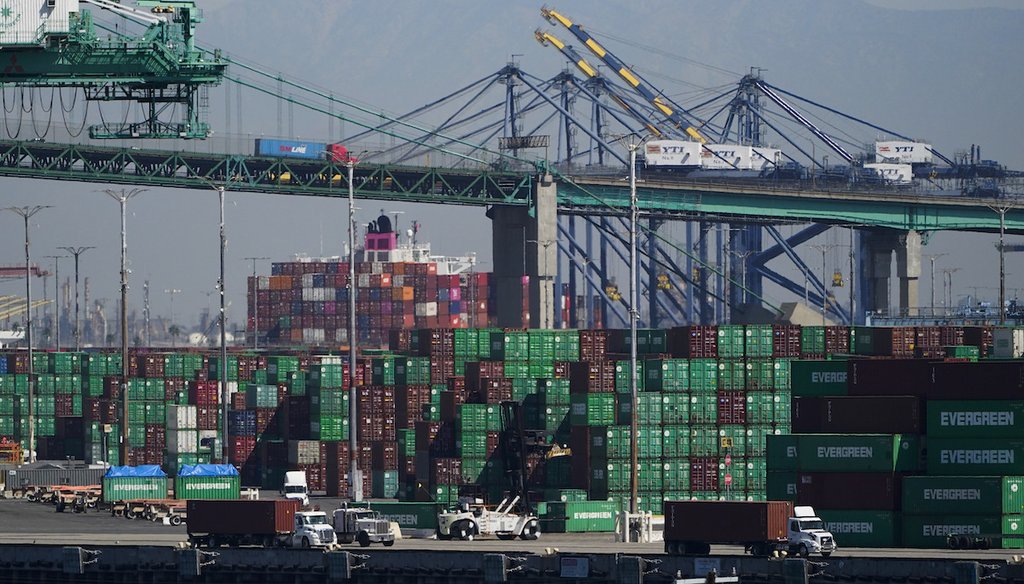
Containers are stacked at the Port of Los Angeles on Oct. 1, 2021. (AP)
If Your Time is short
-
The global supply chain is under stress as shortages of labor and raw materials have created a number of bottlenecks at a time when shoppers are looking to spend.
-
COVID-19 is most to blame for the disruptions, experts said, although there were already many underlying problems with the supply chain. The virus shut down factories, sent workers home and crippled production around the world in 2020. The delta variant further jolted systems that were still recovering from the earliest phases of the pandemic.
-
Experts said it could be months before the supply chain gets back to normal.
Grocery shoppers are paying more for their favorite foods. Assembly plants are waiting for parts. Trucking companies are scrambling to recruit new drivers. And Americans are worried about gifts arriving in time for the holidays.
Businesses and consumers are feeling the squeeze of a global supply chain under duress as the world economy navigates the latest stage of the coronavirus pandemic.
President Joe Biden said Oct. 13 that companies like UPS, FedEx and Walmart would expand their business hours, and that the Port of Los Angeles would open around the clock to keep goods moving and ease the supply issues affecting everything from holiday shopping to home remodeling.
But experts say it could take months to work through the backlogs exacerbated by labor shortages and other pandemic-related disruptions up and down the supply chain, leaving store shelves depleted and Americans facing higher prices as they prepare to shop for the holidays.
"We had a series of smoldering issues that had been around for a while, and then COVID was kind of the needle that broke the camel’s back," said Robert Handfield, a professor of operations and supply chain management at North Carolina State University. "Unfortunately, it’s a bit of a mess, and it’s going to take some time to address."
Sign up for PolitiFact texts
The International Monetary Fund cited supply chain issues as one reason that it’s scaling back its projections for global economic growth. And Moody’s Analytics, a financial research firm, warned in a recent report that those disruptions "will get worse before they get better."
"We have disruption from the source to the store, and the bottlenecks are being exposed throughout the networks," said Nick Vyas, executive director at the Kendrick Global Supply Chain Institute at the University of Southern California.
Why is the supply chain so tangled up, and what will it mean for Americans planning out their holiday shopping? Here’s what experts told PolitiFact.
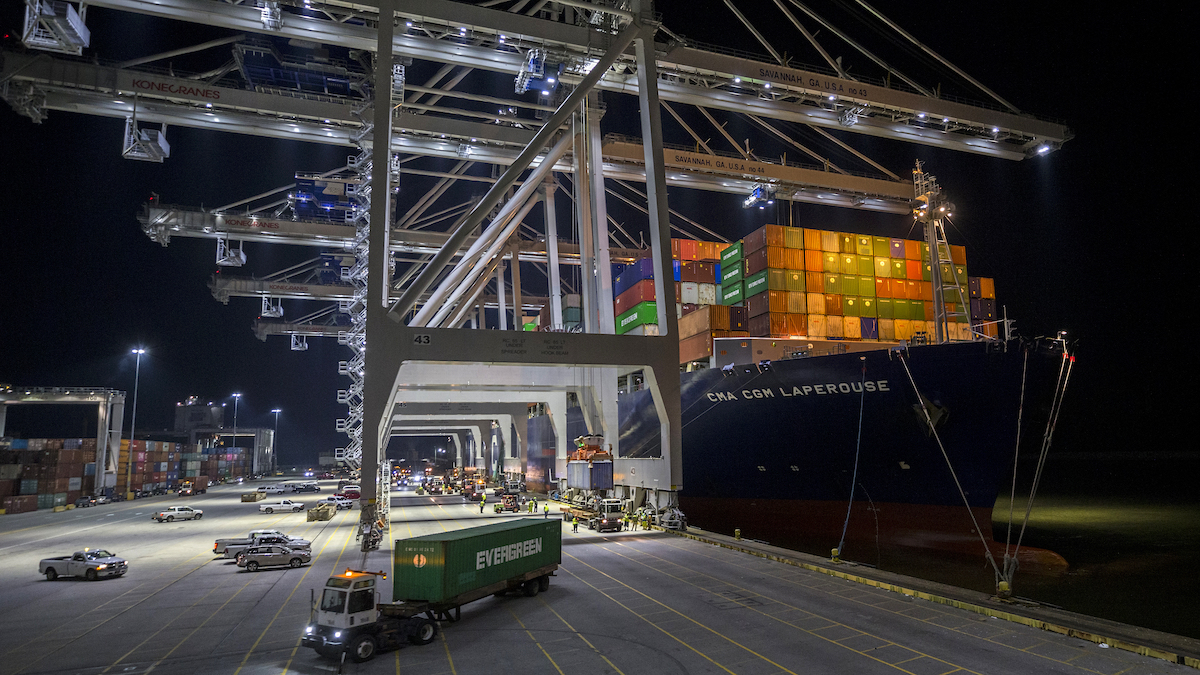
Five ship-to-shore cranes and crews of longshoremen work to load and unload a container ship at the Port of Savannah, Ga., on Sept. 29, 2021. (AP)
What’s slowing down the supply chain?
The global supply chain refers to the network of businesses and operations required to get products built and delivered into the hands of consumers. The links in the chain include such things as the manufacturing of components, the supply of labor, and the transportation of goods across borders and oceans.
The global supply chain is buckling for many reasons, but experts said the biggest driver is the ongoing COVID-19 pandemic.
In 2020, the pandemic closed factories, displaced workers and crippled production worldwide, disrupting the supplies of certain goods. That coincided with a sharp reduction in consumer demand for many products, sending economies around the world into a deep recession.
But global demand for goods bounced back fast, fueled by the rapid development of COVID-19 vaccines, high levels of government assistance, and changed spending habits.
Some people have a little extra cash due to the COVID-19 relief checks, Handfield said. Others have pent-up demand from staying at home, and now they want to buy more goods and upgrade their living situations.
The quick rebound in demand has left processing plants, manufacturers and businesses struggling to keep up.
"You can’t just step on the gas with these industries and expect them to get up to 60 miles an hour in five seconds or less," Handfield said. "It just takes a long time for them to get back."
Now, with the holidays around the corner and Americans eager to spend, demand continues to boom. But on the supply side, the problems are compounding, for reasons that go beyond the pandemic.
The coronavirus continues to constrict factories in Asia and make transportation and logistics more costly. Meanwhile, global warming is leading to more disruptions from hurricanes and other storms. Capital infrastructure is outdated. Shipping containers are in short supply. Semiconductors and critical raw materials like rubber, lumber and steel are running low. Ports are backed up. And retirements and work-from-home setups spurred on by the pandemic have worsened existing shortages of essential workers, including truck drivers.
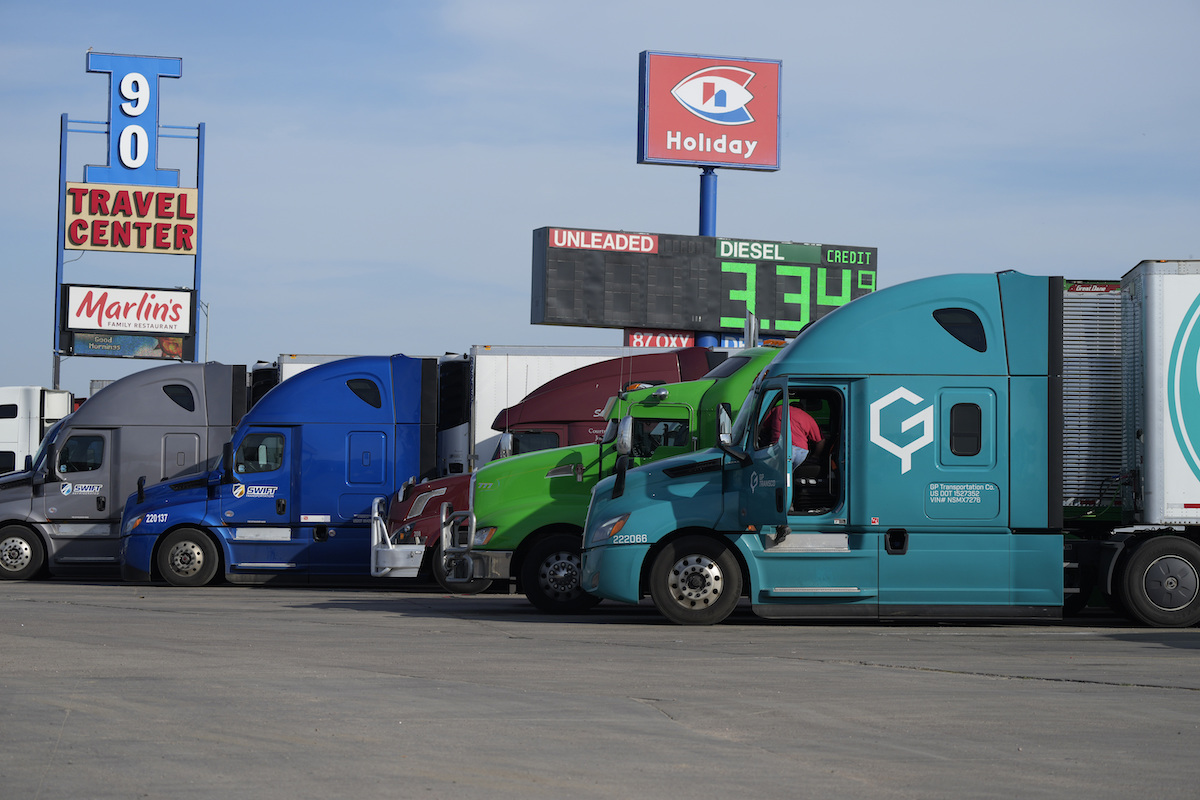
Drivers queue up their trucks at a fuel station on Oct. 8, 2021, in Mitchell, S.D. (AP)
It’s a "perfect storm of factors" leading to delivery delays, product shortfalls and potentially significant price increases, Handfield said.
The main disruption is a "shortage of skilled port workers, truck drivers and rail crew, owing to the delta variant and retirements," said Gary Hufbauer, a nonresident senior fellow with the Peterson Institute for Economics, a Washington think tank.
"The U.S. came into the pandemic with barely adequate port capacity and truck fleets," he added. "So there was no margin to cope with the burst of demand."
Another problem, as reported by the Wall Street Journal and the Los Angeles Times, is that countries around the world have fallen out of sync in their response to the pandemic. The U.S., for example, has opened up far more than many nations in Asia that are still enduring lockdowns and other restrictions. In a global labor market, that makes it harder to get transportation workers to the ports and hubs where they are needed, Moody’s wrote in its report.
What happens next?
Some critics of the Biden administration have sought to blame the president for the price increases and ships piled up at ports. "Christmas presents were never late when President Trump was in charge," Rep. Jim Jordan, R-Ohio, tweeted Oct. 14.
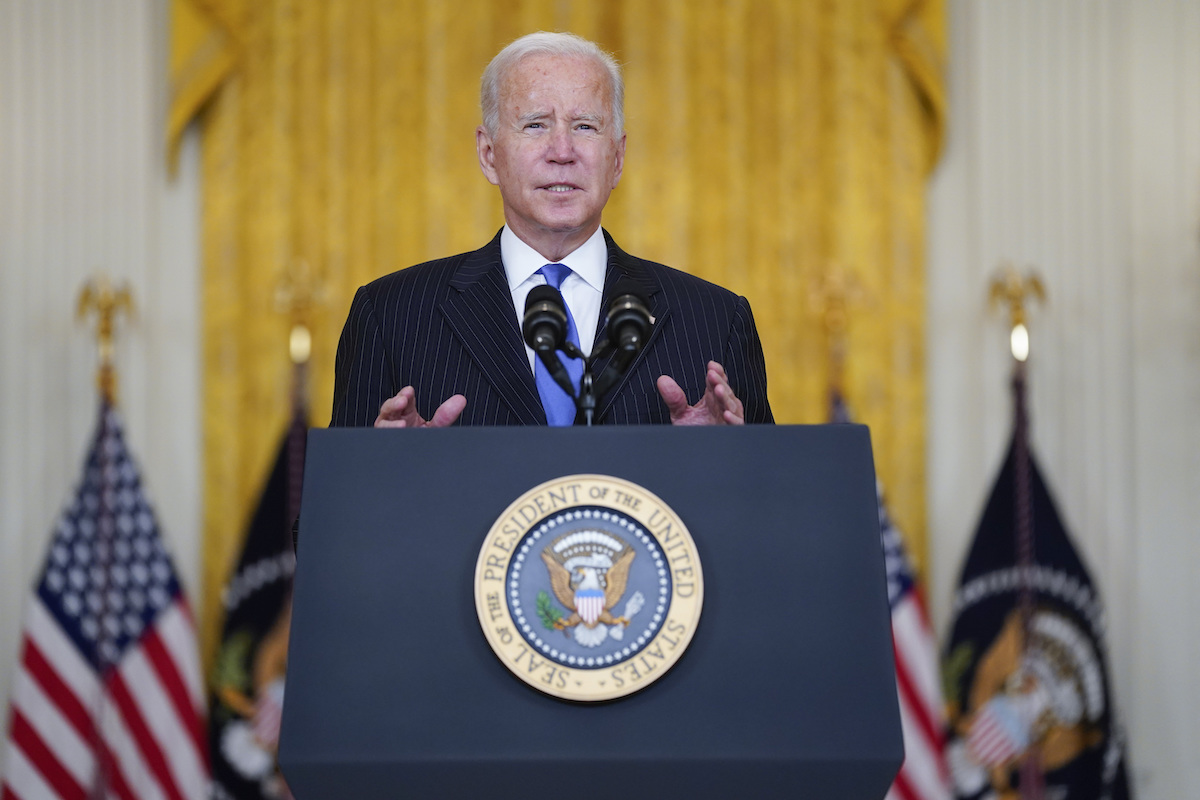
President Joe Biden delivers remarks on the global supply chain in the East Room of the White House on Oct. 13, 2021, in Washington. (AP)
But experts said the problems made worse during the pandemic were deep-seated, preceding both the Biden administration and the first coronavirus cases.
"It is a symptom of four decades of myopic, tunnel-vision, catastrophic failures all across," said Vyas, the USC professor. Globally, the economy grew to prioritize the cheap production of goods over supply-chain resiliency, he said. That created a "long-string, single-country-dependent supply chain" that was exposed by COVID-19.
Factories in China are now flush with orders, and some have backlogs of several months. Shutdowns in less widely vaccinated countries like Vietnam could also hinder the flow of apparel and other products from companies like Nike that rely on assembly lines there.
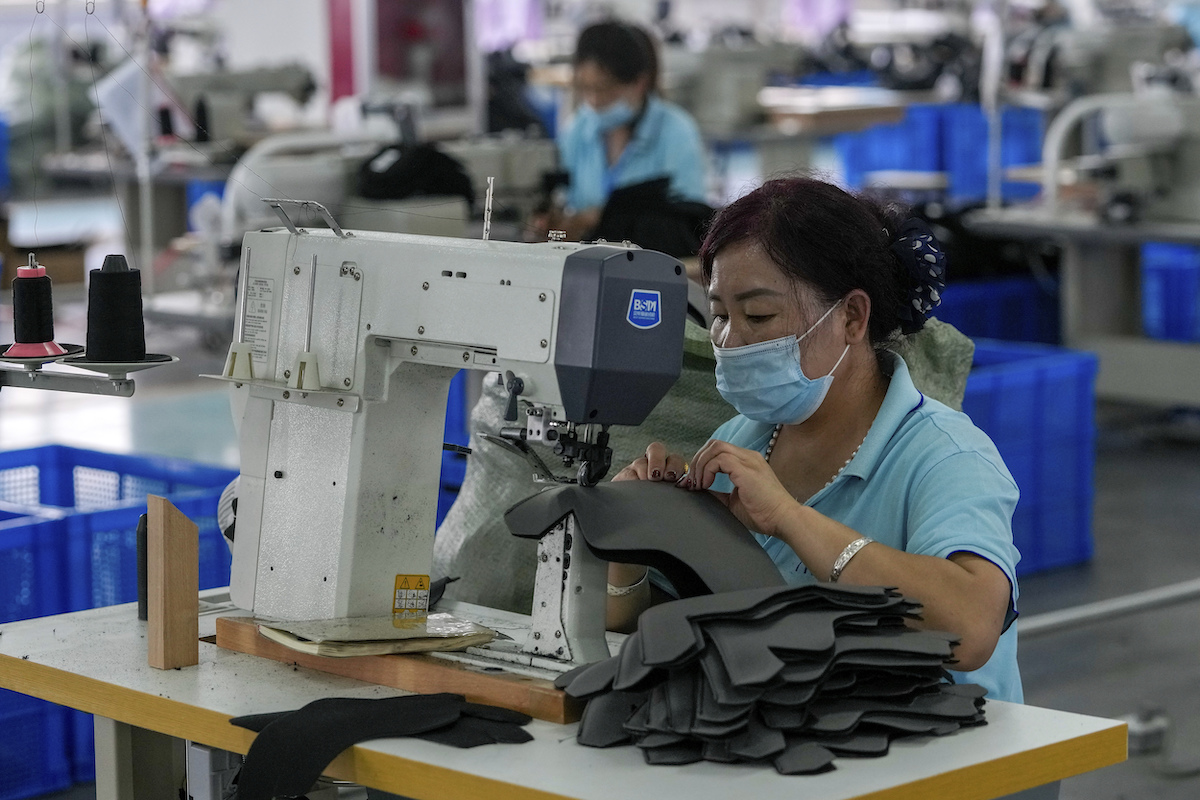
Workers wearing face masks sew layers for ice skates at a factory in Zhangjiakou, China, on July 15, 2021. (AP)
The issues aren’t easily resolvable, experts said. Expanding hours at the Port of Los Angeles was a step in the right direction, but a small one aimed at just one part of the supply chain.
Investments in infrastructure would help, experts said. But clearing the logjams will also "require the rest of Asia and other trading partners to have access to vaccination and stabilize their workforce," Vyas said, meaning it could be months before things balance out.
"We’re coming out of an economic crisis caused by a pandemic," White House press secretary Jen Psaki said during a press conference Oct. 13. "But what we are doing is using every tool at our disposal to ease the impact on the American people, ease the impact on families as we look to the holidays, and certainly beyond that."
In the meantime, Americans should brace for a spell of higher prices and emptier store shelves, experts said. Hufbauer said he purchased household items that are on backorder for over six months. Handfield bought a fridge in August that won’t arrive until December.
"What most people don’t recognize is that this stuff doesn’t just show up on a shelf one day," Handfield said. "We’re in a global economy. We’re not on an island."
Our Sources
The Los Angeles Times, "When will supply chains be back to normal? And how did things get so bad?" Oct. 14, 2021
The Hill, "What you need to know about the supply chain bottlenecks," Oct. 14, 2021
The White House, "Press Briefing by Press Secretary Jen Psaki, October 13, 2021," Oct. 13, 2021
The New York Times, "Biden Announces Measures at Major Ports to Battle Supply Chain Woes," Oct. 13, 2021
CNN, "The global supply chain nightmare is about to get worse," Oct. 13, 2021
Bloomberg, "‘Nothing Left But Fear’: Vietnam’s Factory Crisis Worsens," Oct. 10, 2021
The Wall Street Journal, "Global Supply-Chain Problems Escalate, Threatening Economic Recovery," Oct. 8, 2021
PolitiFact, "Image of map doesn’t show hundreds of ‘sitting’ ships waiting to dock at US ports," Oct. 13, 2021
Email interview with Gary Hufbauer, nonresident senior fellow with the Peterson Institute for Economics, Oct. 14, 2021
Email interview with Nick Vyas, associate professor of clinical data sciences and operations and the executive director at the Kendrick Global Supply Chain Institute at the University of Southern California, Oct. 14, 2021
Phone interview with Robert Handfield, executive director of the Supply Chain Resource Cooperative and professor of operations and supply chain management at North Carolina State University’s Poole College of Management, Oct. 14, 2021


























